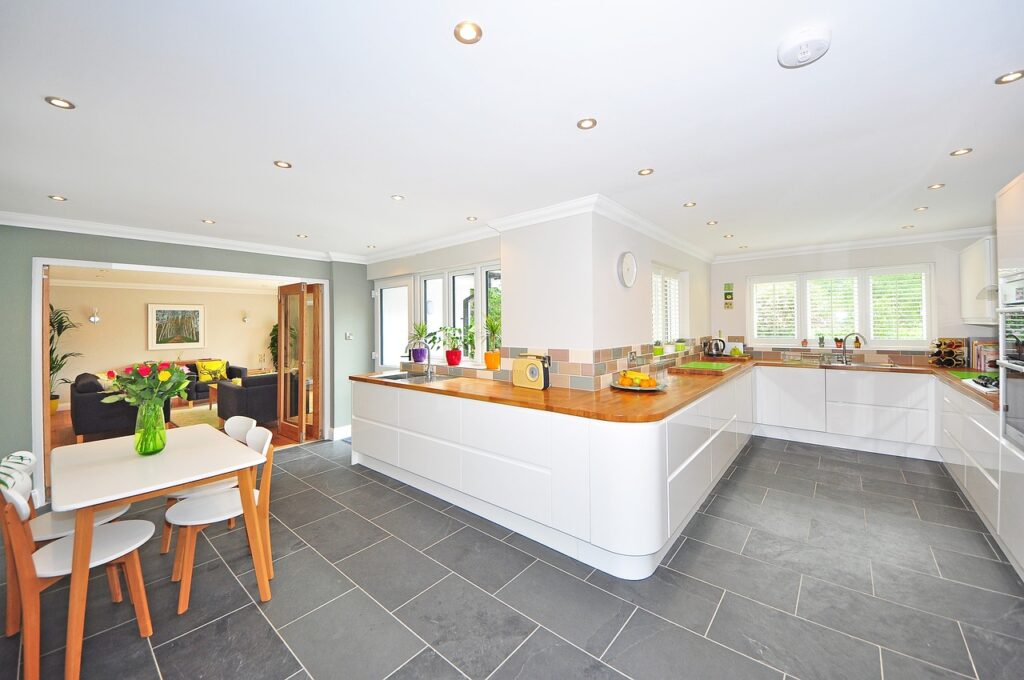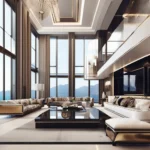Elevate Your Home: The Ultimate Guide to Home Décor
Home décor is an important part of creating a space that reflects your personal style. It should be comfortable, inviting, and should make you feel at home. But where do you start when it comes to decorating your home? With some creative ideas and a few tips, you’ll be able to create a beautiful space that is both stylish and comfortable.
Before you start decorating or buying new furniture, take time to evaluate the basics of your home. Think about what colors you want to use, as well as any other elements like artwork or lighting fixtures. By setting the tone in this way, you’ll have an easier time finding pieces that fit into the overall look and feel of your home.
Choose Pieces That Make You Feel Comfortable
When selecting furniture, think about how it will make you feel when you sit in it or use it. Do the fabrics used feel good on your skin? Are there patterns that evoke certain feelings? Consider these things when selecting pieces for each room in your house. Remember – comfortability is key!
Add Personal Touches
Decorating doesn’t have to be expensive or overwhelming; there are lots of small touches that can add personality to any room. For example, family photos, plants, bookshelves filled with interesting items – all these things can help to give the space a unique vibe without costing too much money or taking up too much space. Also consider adding accents like throw pillows or blankets for added color or texture.
Creating a harmonious living space boosts well-being and happiness. In fact, studies show that over 75% of people feel more fulfilled when they love their home environment. Transforming your home isn’t just about aesthetics; it’s about functionality and comfort too. This guide covers everything you need to know about home décor, from defining your style to budget-friendly tips.

Defining Your Style
Identifying Your Personal Preferences
Your home should reflect who you are. Different styles like minimalist, bohemian, and modern farmhouse each offer unique vibes:
- Minimalist: Clean lines, neutral colors, and uncluttered spaces.
- Bohemian: Vibrant colors, eclectic patterns, and a mix of textures.
- Modern Farmhouse: Rustic elements, warm woods, and cozy accessories.
Visual examples can inspire your choices. Look for Pinterest boards or design magazines that capture your interest.
- Assessing Your Space
Consider your room’s size, natural light, and architectural features. A large, bright room can handle bold colors and big furniture, while a smaller space may require lighter colors and multi-functional pieces.
- Creating a Mood Board
A mood board helps visualize your ideal décor. Use online tools like Canva or Pinterest, or go old school with magazine clippings and fabric swatches. Collect images, color samples, and textures that resonate with you. This process clarifies your vision.
Color Psychology and Palette Selection
- The Power of Color
Colors affect how we feel. For instance, blue promotes calmness, yellow evokes happiness, and green fosters relaxation. Research indicates that people respond emotionally to different hues. Choosing the right color can create the desired atmosphere in your home.
- Creating a Cohesive Color Palette
Select complementary or analogous color schemes to create unity. Start with a base color and add layers. For example, combine soft blue with white and touches of coral for a fresh look. Look at successful palettes in popular designs for inspiration.
Incorporating Accent Colors
Accent colors add flair. Use them in decorative items like cushions, artwork, or vases. A pop of orange in a neutral room can energize the space without overwhelming it.
Furniture Selection and Placement
Choosing the Right Furniture
When shopping for furniture, consider size, material, and style. Oversized pieces can overwhelm small rooms, while sleek designs can enhance spacious areas. Choose furniture that complements your overall décor theme.
- Optimizing Furniture Placement
Efficient furniture placement maximizes space. Arrange seating for conversation and flow. Create focal points, like a coffee table or artwork, to guide the layout. Diagrams can help visualize your arrangement before moving heavy pieces.
- Furniture Style and Trends
Stay updated on furniture trends. Current popular styles include mid-century modern and industrial chic. Look for stylish, functional pieces that enhance your home’s character.
Incorporating Textiles and Accessories
- The Impact of Textiles
Textiles play a crucial role in a room’s warmth and texture. Use curtains, rugs, throws, and pillows to soften spaces. These elements also add layers to your design.
- Choosing the Right Accessories
Accessorize wisely with decorative items like artwork, vases, or sculptures. Choose pieces that complement your style and serve a purpose. This blend makes your décor both personalized and practical.
- Layering and Texture
Layering adds depth. Pair smooth fabrics with coarse textures, like a knit blanket over a leather sofa. Mixing textures keeps your design interesting and inviting.
Lighting and Ambiance
The Importance of Lighting
Different lighting types—ambient, task, and accent—impact your room’s mood. Ambient light is your general illumination, task light helps with activities, and accent light highlights specific features.
- Natural Light Optimization
Maximize natural light by using sheer curtains. Mirrors can also reflect light, making rooms feel brighter and larger. Avoid heavy window treatments that block sunlight.
Choosing the Right Light Fixtures
Select light fixtures that match your style. Pendant lights, chandeliers, and table lamps should complement your décor while providing adequate illumination.
- Budget-Friendly Décor Tips
- DIY Projects and Upcycling
Personalize your space with DIY projects. Paint old furniture, create art, or build shelves from reclaimed wood. Upcycling not only saves money, but it also reduces waste.
Shopping Smart
Look for affordable décor items at thrift stores or online marketplaces. Take advantage of sales to find special pieces. Sometimes, unique items from second-hand shops tell a story and become conversation starters.
Prioritizing Key Pieces
Invest in key décor items, like a sofa or dining table, that will enhance your home. Focus on a few impactful purchases instead of cluttering your space with cheap, trendy items.
Make your house a home with stylish and trendy home and décor items. From cozy throws and plush cushions to elegant wall art and chic vases, elevate your living space with the perfect accents. Whether you prefer a minimalist look or a more eclectic style, there are endless options to choose from to reflect your personality and taste. Create a welcoming atmosphere with scented candles and diffusers, or add a touch of luxury with soft rugs and statement lighting. With the right home and décor pieces, you can transform any room into a warm and inviting sanctuary that you’ll love coming home to.
Key Elements of Home Décor
Furniture: Choose furniture that fits your space, meets your needs, and reflects your style. Popular styles include modern, rustic, industrial, Scandinavian, and traditional.
Examples: Sofas, chairs, tables, beds, and storage units.
Color Palette: Decide on a cohesive color scheme for your home. Neutral tones create a calm environment, while bold colors can add vibrancy and energy.
Lighting: Layered lighting (ambient, task, and accent) adds depth and functionality to your home.
Examples: Chandeliers, pendant lights, table lamps, and recessed lighting.
Wall Décor: Use art, mirrors, wallpaper, or paint to personalize your walls.
Examples: Framed art, gallery walls, or statement mirrors.
Textiles: Add texture and warmth with rugs, curtains, cushions, and throws.
Materials: Wool, cotton, velvet, or jute, depending on your style.
Plants and Greenery: Indoor plants bring life and freshness to any space.
Examples: Monstera, fiddle leaf fig, succulents, or even faux plants for low maintenance.
Storage and Organization: Stylish storage solutions help maintain a clutter-free environment.
Examples: Woven baskets, built-in shelving, and decorative boxes.
Accessories: Small details like vases, candles, books, and sculptures complete the look of a room.
Decorating Tips
- Create a Focal Point: Highlight one element in each room, like a fireplace, a statement piece of furniture, or an accent wall.
- Layer Textures: Mix materials like wood, metal, and fabric for a balanced and inviting space.
- Balance Functionality and Style: Combine aesthetics with practicality to make the space both beautiful and livable.
- Play with Scale: Use a mix of small and large items to create visual interest.
- Reflect Your Personality: Incorporate items and colors that resonate with you.
Let me know if you’d like suggestions for a specific room or style!
Decorating your home can be fun but also challenging if you don’t know where to begin. Start by considering the basics such as colors and other elements that will help set the tone for each room in your house; then think about furniture pieces that make you feel comfortable; finally add personal touches throughout the space for extra character and charm!
Creating a beautiful home is a rewarding journey. From defining your style to choosing the right accessories, each step contributes to your living space. Start small, explore your preferences, and make choices that resonate with you. With these tips in mind, you’ll be able to create a beautiful home décor look that reflects your own unique style!
Your perfect home awaits—begin your décor adventure today!






